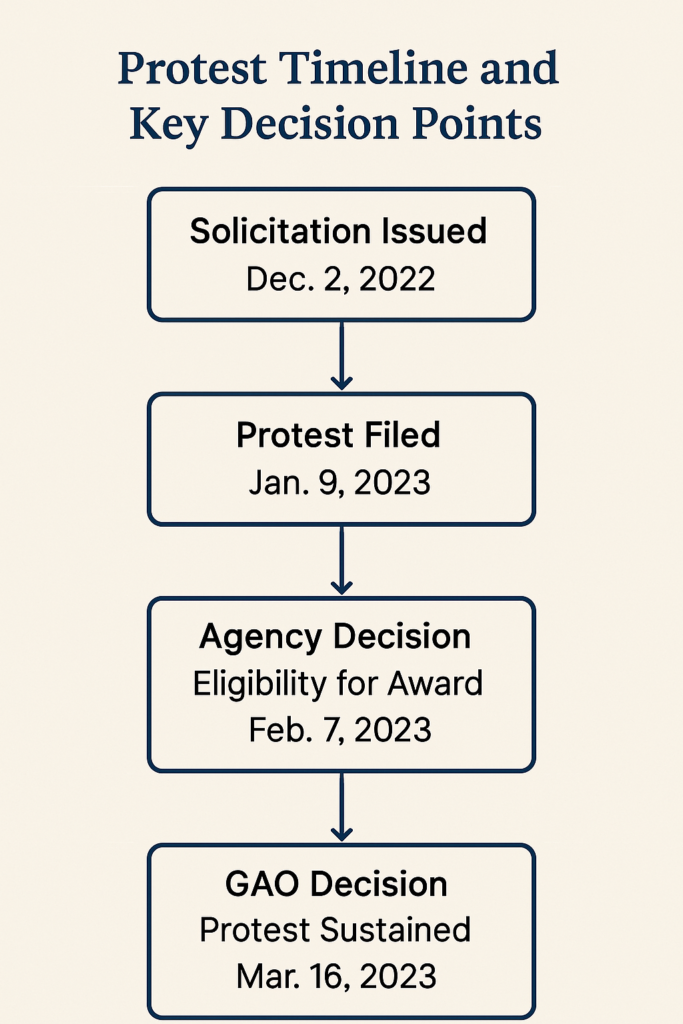Government Contracts: GAO Sustains Protest Over Page Limit Confusion
When it comes to government contracts, ambiguity in solicitations can cost contractors an award. In the recent case of Perimeter Security Partners, LLC, B-422666.4, the GAO sustained a protest due to confusing instructions in the RFQ’s page limit requirements. This highlights a key compliance issue for vendors and procurement professionals alike.
Background: What Happened in This Government Contracts Protest?
The U.S. Army Corps of Engineers issued a Request for Quotations (RFQ) for access control point maintenance. The RFQ limited technical proposals to 15 pages but stated that “Drawings etc.” would be excluded from this count.
Perimeter Security Partners (PSP) included two charts—an organizational chart and a response times chart—beyond the 15-page narrative. The agency excluded those pages from evaluation, rated the proposal “unacceptable,” and awarded the task order to a higher-priced incumbent.

Key Issues in the Government Contracts Protest
PSP challenged the exclusion of those two charts, arguing they were drawings or similar documents. GAO agreed that:
- The RFQ was latently ambiguous.
- Multiple interpretations were reasonable.
- PSP was prejudiced by the exclusion.
This led GAO to sustain the protest and recommend a solicitation clarification and re-evaluation.
Lessons Learned for Government Contract Professionals
For Contractors:
- Ask clarifying questions when RFQs are ambiguous.
- Keep documentation showing your interpretation was reasonable.
- Know your right to file a protest if evaluations seem unfair.
For Agencies:
- Use precise language in RFQs, especially regarding formatting rules.
- Evaluate consistently and transparently across all submissions.
Explore More on Government Contracts
- How to File a GAO Protest
- Best Value Tradeoff Analysis Explained
- RFP Writing Checklist for Government Agencies
Helpful Resources
Visual Aids
- Flowchart showing protest timeline and GAO decision points.
- Side-by-side visual of conflicting interpretations of RFQ instructions.

Be First to Comment